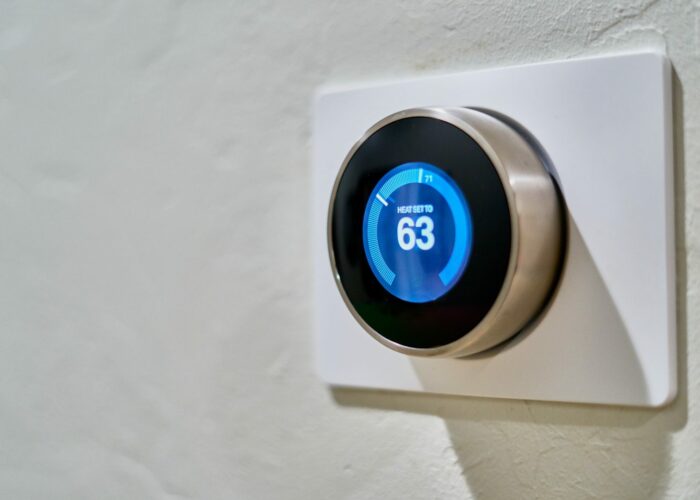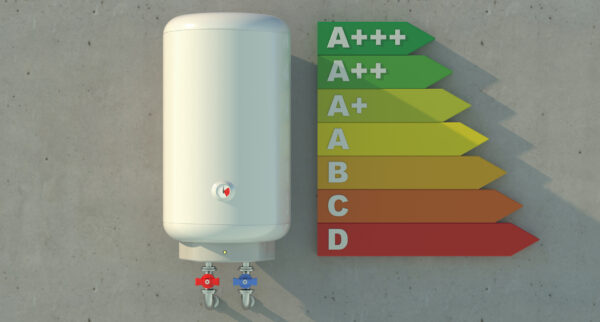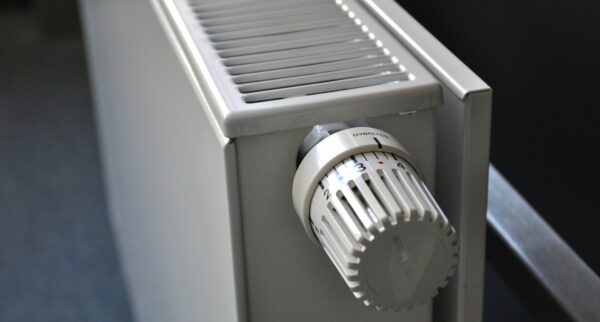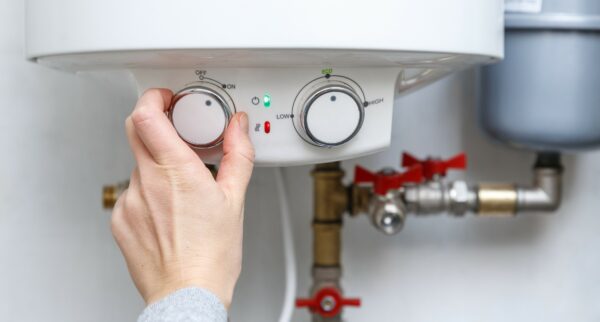Call us today 0207 32 32 999
Written By: JustBoilers.com Experts | Last Updated: January 2022
What is a thermostat? A thermostat is an important part of any heating system. The thermostat gives a heating system signals as to when to turn on or off, by continuously monitoring the temperature of a home.
How does a room thermostat work? A crucial piece of engineering is exactly what’s needed to maintain a constant temperature in every room of the house. And that’s where the word ‘thermostat’ originally comes from. Split it apart and you’ll find ‘thermo’, meaning heat, and ‘stat’, as in ‘static’, referring to something which stays the same.
While almost all of us will have some form of thermostat in our homes, relatively few people know how it actually works. Read on and we’ll divulge all the secrets of some of the most commonly used thermostats, so you’ll understand exactly how your thermostat works – and you’ll be able to spot a problem straight away.
Table of Contents
ToggleCommon types of thermostat
There are several different types of thermostat in common use in UK homes today. Heating systems tend to be controlled either by a digital or a mechanical thermostat, depending on the age of the system.
Modern heating systems usually use an electric thermostat, which is designed to learn how a homeowner adjusts their heating throughout the day and then make changes to keep the home at the right temperature for the family’s schedule.
Digital thermostats are great for those of us who spend a good proportion of the day outside of the home, as they’re designed to reduce energy wastage and cut bills by ensuring rooms are heated only when they need to be. Thermostats like these can also be controlled by mobile devices, giving homeowners the ability to turn their heating on or off when they’re not at home.
Older heating systems will often have a mechanical thermostat, which needs to be programmed by the homeowner and set to the desired temperature. These thermostats can be set for specific schedules, but they won’t pick up on how the heating system is being used or how often it’s adjusted during the day. They are usually much more affordable than digital models, however. The two most commonly used mechanical thermostats are those with a bimetallic strip and those with gas-filled bellows.
How to work thermostats
Thermostats work in slightly different ways depending on the technology being used. Let’s look at some of the common types of thermostat and get to the bottom of how a thermostat works.
Digital:
Digital thermostats are highly reliable, as they use sensors to accurately monitor the temperature of the home and adjust heating settings accordingly. Not only are these thermostats efficient, they’re also quick to respond to changes in temperature.
The latest thermostats can be programmed manually to keep the home at a constant temperature, or they can be set to respond to how a family uses the heating system while they’re home. Over time, these innovative systems learn the family’s schedule and keep the home at their preferred temperature without any adjustments having to be made.
Mechanical:
Mechanical thermostats are slightly more complicated than their electronic counterparts, but they’re also a reliable way of maintaining a constant temperature in the home. The two main types of mechanical thermostats are those which use bimetallic strips, and thermostats which rely on gas-filled bellows. Both work in a similar way.
Traditional thermostats rely on the idea that when something is heated it will expand, and when it is cooled it will contract. Using this rule, an electric circuit within the thermostat will either be complete, turning the heating on, or it will be broken, and the heating will turn off.
There are two ways of completing or breaking the electronic circuit within a mechanical thermostat. It’s done with a bimetallic strip which expands or contracts, breaking or connecting the circuit, or gas-filled bellows, which use gas to push two discs apart or push them back together, breaking or completing the circuit depending on the temperature of the home.
How thermostat works : do’s and don’ts
The placement of your thermostat can have a real impact over how well it works, so consider where your thermostat is located and look into moving it if you feel it may improve its efficiency.
Thermostats will usually be found in the hallway of a home, as this room gives a good indicator of the overall temperature of the building. They should not be located too close to a window, and they shouldn’t be fixed in a particularly sunny spot either. Do this and you’ll find that the thermostat starts reading the temperature of the home incorrectly, turning your heating system on and off at the wrong times.
If it’s particularly cold, many people will respond by turning their thermostat up. But if the thermostat is working well, this isn’t usually needed. No matter how cold it is, the thermostat will measure the temperature of the home, and keep the heating turned on until the house reaches the desired temperature. Adjusting the thermostat won’t make much of a difference to how quickly a house warms up.
What happens when a thermostat goes wrong?
While thermostats are usually highly reliable, they’re not totally immune to malfunctions. And when a thermostat goes wrong it can have a significant effect on your entire heating system.
The first thing you’ll notice if there’s an issue with your thermostat will be that your home becomes either unbearably hot, or your heating system fails to come on at all, leaving every single room decidedly chilly. While you may be forgiven for thinking there’s a problem with your boiler if this happens, it can often be a simple issue with the thermostat that’s causing all your trouble.
A broken thermostat will need repairing quickly, as it’ll leave you with very little control over the temperature of your home. While some problems can be repaired, it’s more common that a replacement thermostat will be recommended. This is a job for a qualified heating engineer. Contact your preferred engineer to report the problem and you’ll soon have your heating back in full working order.
—
If you think you may have a problem with your thermostat, or you’d like to find out more about switching your existing thermostat for a newer, more efficient model, make sure you get in touch. We’re here to answer all of your questions, and can advise you on the best thermostat for your home.





